I cast off in Port Mansfield, Texas, a little before 9 a.m. on a muggy June morning under mostly clear skies and a light, variable breeze. The Texas 200 is an annual run of scores of boats, most of them under 20′ and many homemade, through the bays and cuts between the southern Texas mainland and its barrier islands. It was my second time participating. I’d completed the roughly 200-mile course in 2017 (see “The Texas 200: A trial by water”). Although the winds in this part of Texas at this time of year can range from dead calm to powerful squalls, the event’s timing typically avoids the last of the winter northers and the first of the summer hurricanes, and the norm is moderate-to-stiff winds on the quarter or beam for the entire 200 or so miles.When I cleared Port Mansfield, the wind in Red Fish Bay remained light but became steady from astern. A scattering of cumulus clouds hung just above the horizon. It was already hot, but the breeze coming across the water was refreshing. The water gurgled against the hull and trailed away in a flat, weak wake. Half a dozen other sails dotted the offing ahead, and two boats astern still worked their way out through the fluky breezes in the harbor.ARR & ARR, my homemade Flint, a 14′ 10″ skiff designed by Ross Lillistone, was loaded far more lightly than she had been in 2017, and with the modifications I had made to the boat and rig since then, including the addition of buoyancy bags, and my gained experience in these waters, I was confident that we’d make it to the finish at Magnolia Beach.
Join The Conversation
We welcome your comments about this article. To include a photo with your remarks, click Choose File below the Comment box.

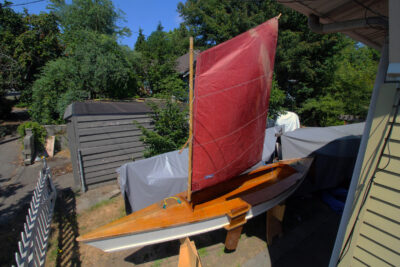
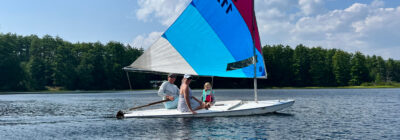
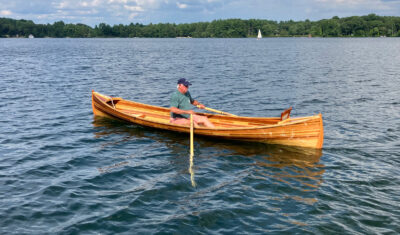
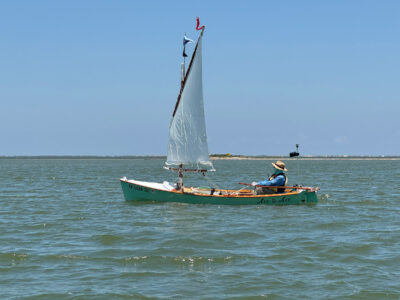
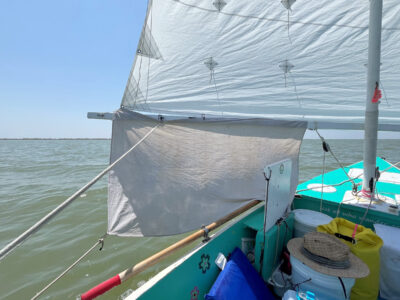
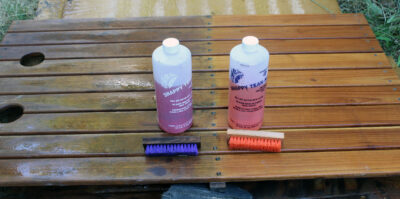
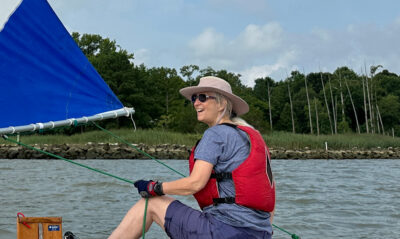
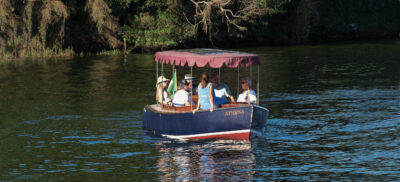
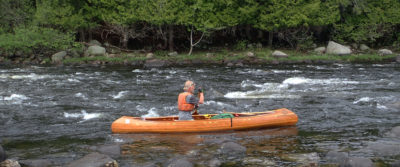
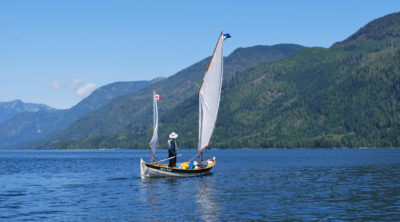
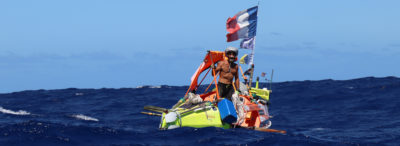
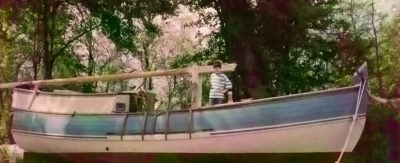
Great tale! Well done.
Thank you, Robert.
Well done, and thank you for sharing. I enjoyed reading your story.
Thank you, Mark.
Always enjoy reading tales from the 200. Completed myself, 2016 I think, in a Mayfly 14. Thanks for sharing.
Thanks, Paul. A Mayfly is perfect for the Texas 200. Great choice!
Hi Paul,
Wondering if you would care to comment on the relative advantages of your tiller set up. I have a Flint in Tasmania.
Cheers,
David
Hi, David. Thanks for reading. Always a pleasure to find another Flint owner.
I use the standard tiller from the Flint’s design with an extension when daysailing alone. The push-pull tiller, though, opens up the sternsheets for a passenger or, for multiday excursions, for gear that might stick a bit above the top edge of the transom. It’s also a nice area for a foldable backpacker’s solar panel that gets little spray and, with the push-pull tiller, no shadow. And if I need to shift weight aft, with the push-pull tiller, I can just plop back there myself.